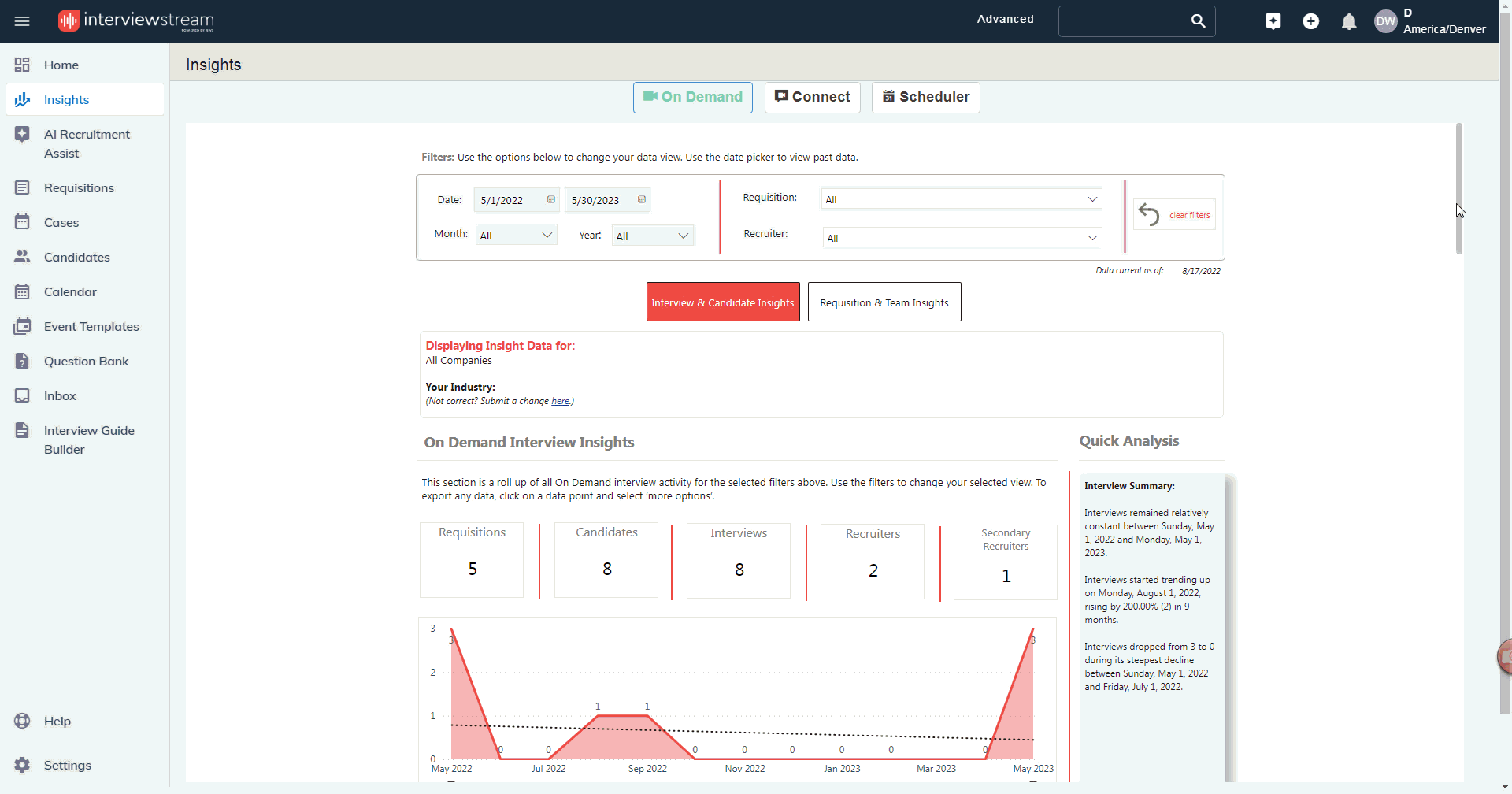3 Essential Strategies to Reduce Your Time-to-Fill
You’ve taken the time to calculate your time-to-fill. You’ve compared it to industry benchmarks, and you’ve discussed notes with your colleagues and leaders.
The bottom line is that you need to move the needle. Reducing time-to-fill improves the recruitment experience, for candidates and recruiters. This is where recruiters shine in proving their value and enabling smarter, more effective teams.
But how? To make real change and improve your hiring metrics, use these tactics to help you get started.
#1: Reduce Hiring Bottlenecks With Interview Scheduling and On Demand Interviews
Without exception, screening and interview scheduling is the most time-consuming part of the recruiting process. Some of this pace is justified: it takes time to source, connect, and get to know your applicants. And time for them to get to know you. But leaning into that justification drags down your time-to-hire metric.
Instead, double down on ensuring your process is as efficient as possible without losing its humanity. The trick is to cut manual work so you can focus more on interviewing your top candidates. Check the benefits for using an interview scheduler:
- 80% of candidates schedule within 24 hours. Allowing you to meet with your favorites, faster.
- Recruiters save ~200 scheduling hours a month
- You have instant access to candidates working outside the 9-5. No delays or lag time.
Additionally, one way interviews eliminate the need to coordinate schedules altogether. Candidates are able to complete screening interviews on their own time. And hiring managers are able to review on their own time as well.
That saved time means you could complete your screening process before a competitor even schedules a phone call with them. Which is why video interviews are the best alternative to a phone screen.
#2: Track recruitment metrics with your recruiting tool
Improving your recruiting metrics requires measuring your recruiting metrics. Track time-to-hire, time-to-fill, and quality-of-hire. And then make data-based improvements with those metrics top of mind.
Having a hiring tool that allows you to see your hiring data at a glance is a massive advantage. Advanced reporting allows you to see:
- Interview completion rates (an opportunity to see which requisitions or recruiters perform best).
- Candidate drop off (and at what stage they drop off).
- Industry benchmarking, so you can see how you stack up against the competition.
Recruiters are already tracking these hiring metrics, but interview insights makes reporting easier. You could tally the numbers in Excel. Or, you could export them instantly.

#3: Use the right interviewing software
Leveraging video interviews can offer huge savings on your time and resource budgets. But make no mistake: just any video conferencing tool won’t do the job.
You need to present a professional experience that reflects your brand and reassures candidates of your legitimacy. Especially as candidates are wary of new hiring scams. You also need to ensure data privacy and create a centralized place for interviewers to provide feedback on candidates.
Here are the features your video interviewing platform should have:
- The ability to integrate with your applicant tracking system.
- Rating, sharing, and recording capabilities.
- Automated reminders for candidates.
See more features you should get from your video interviewing software here.
Bonus Tip: Gather buy-in with thoughtful collaboration
As a recruiter, you are an essential bridge between the “internal” and “external” world for your organization. And the first impression candidates get of the company they’re interviewing.
Make sure you build good collaboration habits across your HR and leadership teams. Communicate about the status of your candidates, open roles, and pipeline. Bring feedback together in a defensible and useful way, so hiring managers are empowered to make good decisions—and to work quickly.
Reducing time-to-fill with interviewstream
If your time-to-fill is longer than you’d like it to be, begin by improving the efficiency of different stages within your interview process. During the scheduling and screening stage, coordinating everyone involved—their calendars, their questions, and their requests—can seriously slow you down.
But modern recruiting software can help. A video interviewing platform like interviewstream is the best way to alleviate hiring roadblocks. With one way interviewing and automated scheduling, you can significantly reduce your time-to-hire. Along with other hiring metrics.
Want to learn more? Schedule a demo and we’ll walk you through each time-saving feature.
About The Author
Caroline Chessia is the Marketing Operations Specialist at interviewstream. She loves color-coordinated graphs, hiking in the mountains, and every dog she meets—especially the Golden Retrievers.
